The counterfeiting of money is one of the oldest crimes in history. At some periods in early history, it was even considered treasonous and was punishable by death.
During the American Revolution, the British counterfeited U.S. currency in such large quantities that the Continental currency soon became worthless. “Not worth a Continental” became a popular expression that is still heard today.
At the beginning of the Civil War, one-third to one-half of the currency in circulation was counterfeit. Approximately 1,600 state banks designed and printed their own bills, each carrying their own design, creating 7,000 varieties of legitimate currency. To resolve confusion, the government adopted a national currency and, three years later, when that currency was counterfeited and circulated extensively, the United States Secret Service was established to develop necessary enforcement measures.
While counterfeiting is rooted in paper money, the issue is also commonplace in a number of other industries. Today, counterfeiters are producing fake electrical products, automotive and aviation parts, pharmaceuticals, medical equipment, computer software, apparel, and cosmetics. Chances are if a product is popular, then someone is trying to counterfeit it for their own gain and greed. The difference between success and failure rests on how legitimate manufacturers, distributors, retailers and inspectors work together to stay one or two steps ahead of crooks whose only goal is to deceive consumers by manufacturing cheap imitations that are often not only poor quality, but can also be potentially hazardous.
Product Counterfeiting
Product counterfeiting has become a global issue over the last decade. Experts estimate that counterfeit products make up about 8 percent of world trade, with much of the revenues from large-scale operations going to organized crime. Counterfeit products passed off as originals take advantage of legitimate company resources such as product marketing efforts and the brand equity of trusted trademarks or patents. Consumers think they are getting originals but end up with substitutes instead, bearing counterfeit corporate logos and even unauthorized safety certification marks.
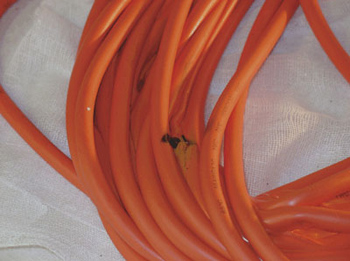
Photo 1. Counterfeit extension cord
According to the International Anti-Counterfeiting Coalition (IACC), an international organization comprised of a cross-section of global business and industry, U.S. trademark holders lost some $200 billion (USD) last year alone to counterfeiters. Auto parts makers lost $12 billion in 2003. And the computer software industry is losing more than 40 percent of its revenues to pirated software applications. In some countries, close to 90 percent of the software in use is fake.1
Revenue generated from the sale of counterfeit products have fed global organized crime groups and, in the worst case, terrorist organizations to pursue acts of crime. According to media reports, the FBI had compiled strong evidence that the terrorists involved in the bomb activity of the World Trade Center in 1993, did so with the money made from counterfeit textiles sales from a store located on Broadway in New York City.2
So, while counterfeiting has been a problem for centuries, it has become a global marketplace issue that has great economic implications and creates safety concerns. Counterfeit goods are being made inexpensively at the cost of others while criminals continue to garner great profits for their unlawful actions. It is now time for all of us to work together and take proactive steps against suspicious products.
What Is Being Done to Fight Counterfeiting?
Government
The issue has escalated throughout the years so much that Congress itself recognized organized crime’s increasing role in intellectual property fraud when it developed trademark counterfeiting and copyright piracy predicate acts under a federal statute. The federal money laundering statutes now consider trademark counterfeiting and copyright piracy as crimes that constitute conviction.
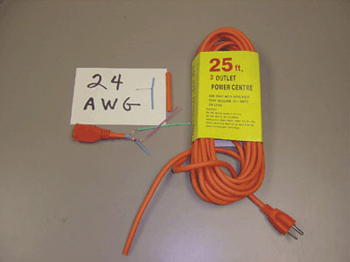
Photo 2. Extension cord 24 AWG
Politicians have made strong statements about China and other Asian countries for producing cheap fakes of strong brand products. “We need to stop standing by and watching as year after year China continues to counterfeit U.S. products, costing many Americans their jobs,” said Sen. George V. Voinovich, R-Ohio, at a congressional hearing last December. Further, while major corporations lose a lot of money, the government also loses money, because most bogus products are sold under the table without sales tax.
Under the Homeland Security Department, counterfeiting has been an added responsibility and focus area. However, should the government put counterfeiting higher on the agenda? Should the United States create stricter laws regarding visas and foreign entry into the country? Should federal law provide for seizure and destruction not only of counterfeit articles for sale, but also of equipment used to produce and handle them? Should the United States press other nations to act more vigorously against counterfeiting? What are other companies doing to protect the integrity of the products they sell to consumers? These questions need to be addressed at this high-level in order for counterfeiting activity to cease.
Manufacturing and Distribution
According to the National Association of Manufacturers (NAM), product counterfeiting hampers the world economy, endangers consumers, deprives owners and employees of their rightful revenues, and feeds organized crime. NAM maintains that all member nations of the World Trade Organization should live up to their obligations of maintaining a sound industry of legitimate manufacturers. In fact, the organization opposes granting visas to anyone who may have counterfeited or trafficked bogus product.
The manufacturing industry favors strengthening the federal criminal provision against trafficking in counterfeited product. If the industry has their way, both the product and the machinery used to produce them will be destroyed. The law would protect packaging as well so that well-known brands and trademarks could not be abused. Manufacturers are also exploring ways to get U.S. trading partners to take a more active stance in toughening border control measures.
Manufacturers are also creating special counterfeiting groups to focus on creating a new agenda. They are joining other industry groups in support of an introduction of new legislation that will strengthen the federal criminal statute on counterfeiting. With respect to trade policy, most manufacturers believe counterfeiting is now one of the two most important trade issues with China.
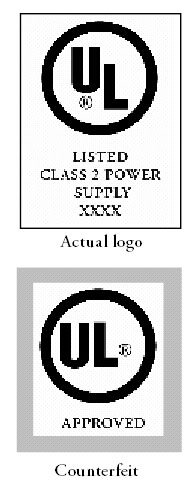
Photo 3. Actual logo/counterfeit
To deter counterfeiters, companies are investing in cutting-edge technologies and security features that help identify counterfeit goods and stay a step ahead of the criminals. In fact, some Fortune 500 companies have reportedly spent on average $2 million to $4 million (USD) per year to combat counterfeiting and preserve the integrity of their brands. Some even reported spending up to $10 million (USD) to ensure counterfeit products aren’t being manufactured or distributed that bear their brand name or logo.3
Other special security technologies such as organic DNA, retinal scans, holographic labels, and radio-frequency identification devices (RFID) are being and have been developed to decrease counterfeit product activity. The Gillette Company was one of the first companies to integrate RFID technology into their product development cycle. As of late, Adobe deterred counterfeiters from using the PhotoShop application for duplicating currency logos and marks.
But as promising as many of these technologies sound, no single anti-counterfeiting measure is appropriate in every case. The truth is, there is strength in numbers if all manufacturers band together to stop counterfeiters from making a profit at the consumers’ expense. For example, in certain industries such as automotive, counterfeiters must partner at the wholesale level at the established channels of distribution in order to get “”bad”” product into the cycle. The industry has found that if there’s no cooperation given, the counterfeiter has been deterred from selling bogus product, and they have worked to enhance their distribution practices. Perhaps this could be a model for success in other industries. If we want to minimize counterfeiting efforts, we need to increase the number of gatekeepers who manage the manufacturing and distribution product cycles, get into the habit of questioning every product or material’s origination in the production of the end product.
Counterfeiters, like drug dealers, are only worried about the profit and not about public safety and wellness. The integrity of those once reliable brand names is being challenged as counterfeiters are abusing the products that aren’t sound and haven’t been tested to appropriate industry and safety standards.
Product Testing and Certification Organizations
As the leader in product safety testing and certification, Underwriters Laboratories (UL) was the first to establish an anti-counterfeiting program to maintain the integrity of the UL Mark. UL believes products that bear unauthorized certification marks are not only of poor quality, but can also pose potential shock and fire hazards to consumers, endangering 110 years worth of consumer confidence in the safety of products bearing the UL Mark.
In addition, UL designed special holographic labels that are more expensive and difficult to duplicate. You will find our holographic UL Marks on specific types of products, typically high-volume, low-cost items commonly manufactured in China. These include power supplies, relocatable power taps, cord sets and power supply cords, switches, holiday lights and decorations, and various luminaires.
UL also partnered with U.S. Customs to help improve anti-counterfeiting measures. UL offers U.S. Customs inspectors around the globe the necessary training to help protect our borders. We also provide reference materials and have developed a special information hotline to help inspectors identify potential counterfeits. Through this partnership, UL handles 1,500 inquiries each year from U.S. Customs officials. Since we initiated our program in 1995, UL has assisted with 950 seizures of counterfeit product, with a value in excess of $120 million (USD).
Underwriters Laboratories is so aggressive in our safety mission that we have adopted a zero tolerance policy where we relentlessly pursue counterfeiters and prosecute to the fullest extent of the law. This includes the immediate seizure and ultimate destruction of all counterfeit products so they will never enter the stream of commerce or be shipped to another country. In addition to the loss of product when caught, U.S. Customs also fines offenders that import counterfeit goods. The fine—the first time—is up to one times the retail value of the genuine, non-counterfeit product.
It is our belief that there is strength in numbers when staying ahead of the crooks. No one organization can stop counterfeiters without a multi-faceted approach that includes the cooperation of government, manufacturers, authorities having jurisdiction, retailers, and law enforcement agencies. In building on the success of our U.S. Customs partnership, UL has proactively met with the Chinese government regarding their current exportation processes, practices and programs. And UL is working with other organizations, including the National Electrical Manufacturers Association (NEMA) and the Electro-Federation Canada (EFC), International Anti-Counterfeiting Coalition (IACC), Interpol, the FBI, Canadian Customs Revenue Agency, and Royal Canadian Mounted Police (RCMP), on additional proactive initiatives.
How Is Counterfeiting Affecting the Electrical Industry?
Counterfeiting affects the electrical contractor when an unsafe product is installed and results in injuries to consumers and their property. Electrical products, including ground-fault circuit interrupters (GFCIs), receptacles, circuit breakers, and light fixtures, are being counterfeited, and could potentially be installed into homes and buildings, posing fire and shock hazards to consumers.
While products are typically bought through a reputable third party, such as an installer or contractor, there are some who are looking to make an extra buck by buying cheaper and often counterfeit products. They then charge the customer the market price, install the often faulty product, while making off with a profit on the overall job. While most contractors probably don’t question the products they install, they should be more aware of what is going on in the industry and question inexpensive product.
In addition, this is where authorities having jurisdiction (AHJs) can help. Since AHJs work closely with contractors to ensure product installations meet National Electrical Code requirements and other necessary industry standards, they need to take a more proactive stance and ask electrical installers questions that will help track down counterfeiters. If the products look suspicious, they might ask such questions as, where did you buy the electrical product? Did it come from a legitimate source? Was it being offered at a discount rate? This group sees a lot of products before they are installed and can act as a gatekeeper to counterfeit goods. If something seems to be suspicious, the information can be recorded and further action can take place.
While it is sometimes difficult to uncover counterfeit goods, some counterfeiters are sloppy in their work. Inspectors should urge consumers and contractors to be cautious of product found at deep discount stores that are packaged in boxes that don’t display the brand or product name or certification label on the outside of the box and on the product itself. A good rule of thumb is if the price is too good to be true, then it probably is. Make sure to look for a reputable certification mark on the box and on the product that will help the odds against buying counterfeit products.
Authorities having jurisdiction should also be aware that genuine UL Listing Marks consist of four elements that can be found on the product in the form of a label, die-stamping, molding, or silk-screening (in certain circumstances, this information may appear only on the packaging). Knowing this information may help you verify legitimate UL Marks.
The four elements of a genuine UL Mark are:
1) The name and/or certification mark of Underwriters Laboratories (UL in a circle).
2) The word “”LISTED”” in capital letters.
3) A control number (four alpha-numeric characters) or issue number (sequence of typically 4 to 6 numbers). The issue number may or may not be preceded by one or two letters and may or may not be preceded by the phrase “”Issue No.””
4) A product identity (i.e. what the product is)
This information can also be found in the General Information for Electrical Equipment Directory, (veteran AHJs might know this as the “”UL white book””). The White Book details important information on the scope of each listing category as well as important installation information including product markings and how to properly identify listed products for each category. It can be ordered by contacting UL’s Northbrook, Illinois office at 847-272-8800, ext. 42899 or you can obtain one at your local IAEI chapter meeting
While public health and safety is the number one mission of any reputable product safety testing and certification organization, counterfeiters are unscrupulous. They aren’t worried with how the insufficient product will affect the person buying it; they are purely into it for cash benefits. They are simply in the shady business of making a profit putting no interest or time into quality or research and development matters. Since the electrical industry is your focus and because you see items like GFCIs and multi-circuit breakers on a regular basis, check the products more proactively and report anything that could be deemed suspicious.
Be Proactive and Take a Stance Against Counterfeiting
In order to stay ahead of these criminals, counterfeiters will need to be identified before bad products enter into our countries. Counterfeiters are taking away jobs, creating potential safety hazards to consumers, are escaping taxes and other pertinent costs associated with product production, and they should pay a price for their personal greed for profit based on others intellectual property, trademarks or patents.
To effectively protect your brand from abuse, companies need to know immediately when copies of their products appear within the market place. Whether in the form of retail or street sales, culprits often exploit a void in the market, offering copies where the legitimate branded goods may not be available due to the brand’s identity, image or intended market. Do not be complacent in believing that counterfeiting only happens to others. If a product is popular and profitable then at some stage it will receive unwelcome attention from the counterfeiters. Everyone is responsible no matter your position, whether you are a manufacturer, authority having jurisdiction, retailer, distributor or consumer. Take a stance today and fight back against counterfeiters.
1National Association of Manufacturing, Counterfeiting, July 2003 at http://www.nam.org/tertiary.asp?TrackID=&CatergoryID=1192&DocumentID=26803 (2)
2James Nurton, Why Counterfeiting is Not So Harmless, Managing Intellectual Property, September 2002, at 43; Feds Track Counterfeit Goods Sales, athttp:///abcnews.go.com/wire/US/ap20021024_151.html
3National Association of Manufacturing, Counterfeiting, July 2003 at http://www.nam.org/tertiary.asp?TrackID=&CatergoryID=1192&DocumentID=26803(1)











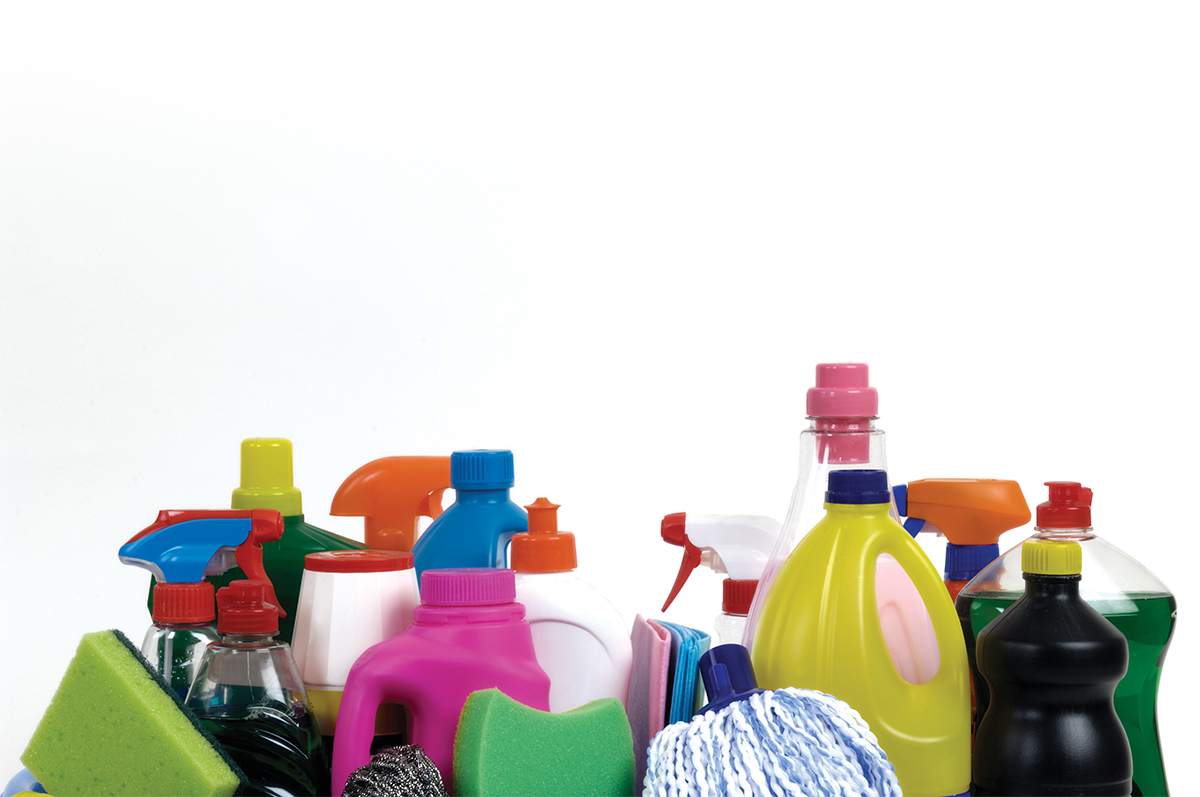
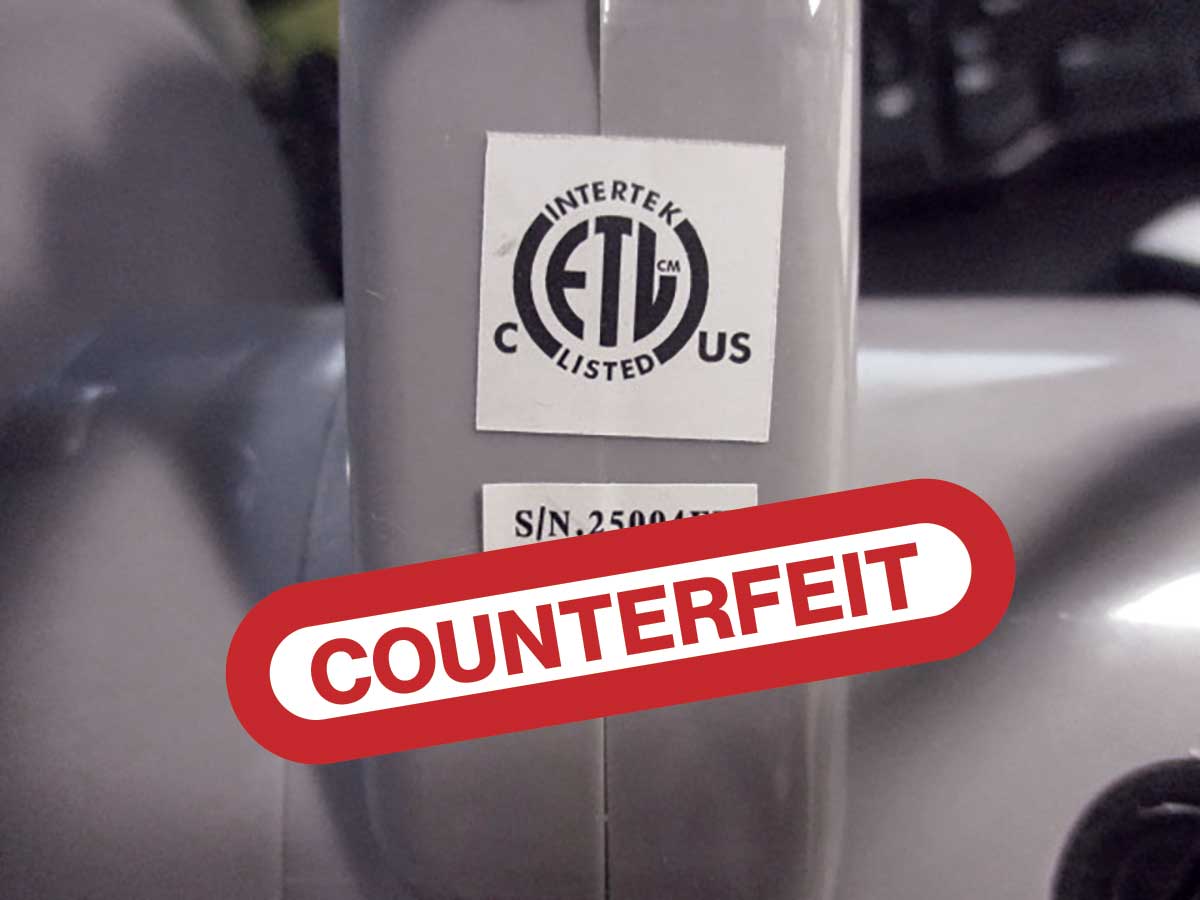
Find Us on Socials